The era of classic English gardens brought the beauty of herbaceous plants to public light. Eventually, these beautiful works were brought across the pond to the United States, where the same plants melted in the heat of many American gardens. The manicured, eclectic planting palettes require constant management and a large budget to control reseeding and invading.
However, the New American garden has introduced an equally skillful approach that looks to regional landscapes for inspiration. Large masses of plants in restrained, monocultural blocks keep the composition bold and simple. These are solution-based designs, highlighting plants in naturalized drifts, appreciating them for their form and texture.
Today, this restrained, natural garden art can be easily accomplished in most home gardens and landscape designs. Here's how.
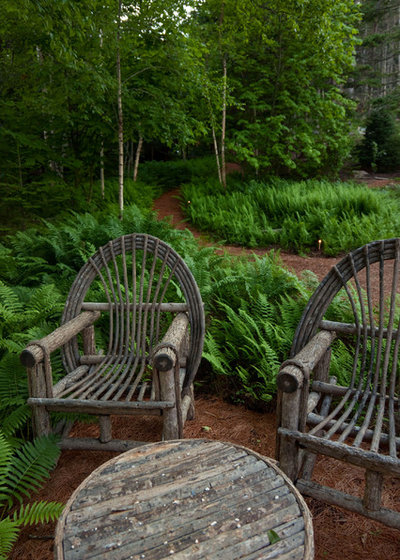
Matthew Cunningham Landscape Design LLC
Embrace the landscape you have. Find plants that thrive in your garden and add more of them. If it's a sunny spot, consider using more grasses to dominate the ground plane. If the area is shady, consider adding more trees and using ferns for groundcover.
This beautiful garden has masses of fern covering the ground plane and groves of birch sited to create some intrigue beyond — it's simple, bold and calming.
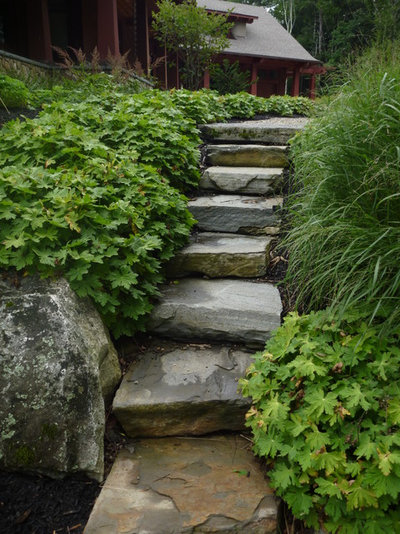
Stone Farm
Keep it simple. Stick to one or two plants for your garden's groundcover. Find something lush that will fill out with little maintenance.
Geranium macrorrhizum is a tremendous ground cover in shade, and is as deer-resistant as plants come. This designer dominated the space with this plant and a sedge — trouble-free plants that will live for decades. The textures complement each other beautifully.
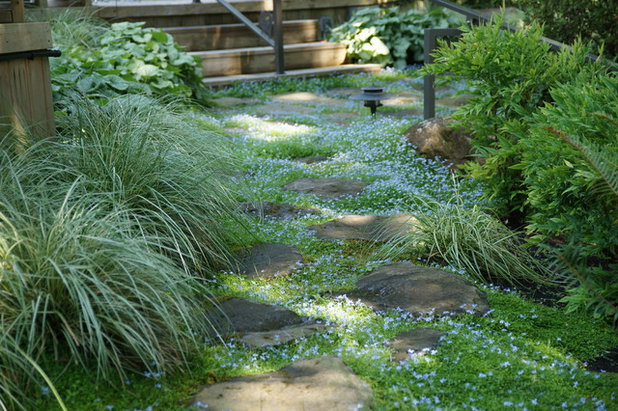
Creative Garden Spaces
Divide and plant what you already enjoy. If you have limited resources, divide herbaceous plants in the spring to give you more of what you already enjoy. Using more of the same plant has a surprisingly bold and beautiful effect.
Here, irregular stepping stones were made more romantic by planting
Mazus repans around them. Nandina (right)
, brunnera (in path) and sedges keep the palette simple and graceful.
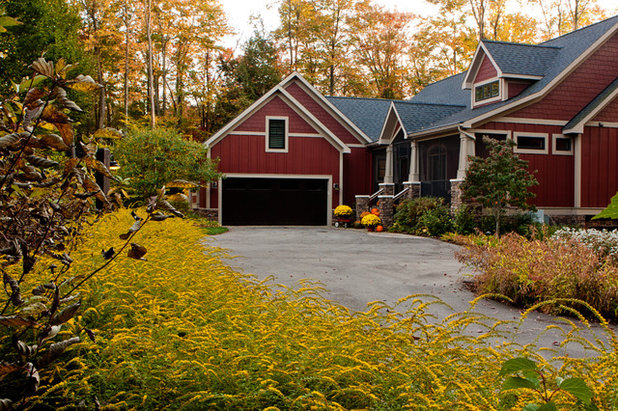
Blue Ridge Landscaping
Select the right plant. Instead of going overboard with many different plants, try to find one that will fill all of your needs. This mass of
Solidago 'Fireworks' is simple and amazingly effective at covering the ground aggressively, limiting potential weeding, mulching and maintenance. This large space could have easily housed dozens of different plants (which would've required a PhD to manage), but this designer found one that worked and went big.
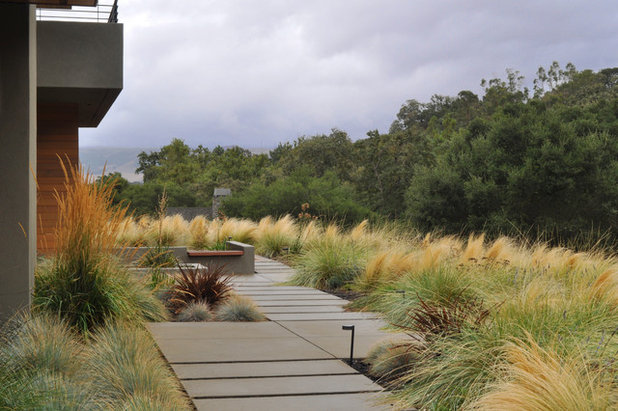
Huettl Landscape Architecture
Aim for a naturalized composition. If you're going to mix in several different kinds of plants, aim for a casual, less orderly approach. Here, drifts of needlegrass (
Nasella sp), reed grass
(Calamagrostis sp
) and
Festuca maireii are punctuated with a mix of flowering plants. The powerful lines and scale of the walk make this naturalized composition a little more palatable to those who need order.
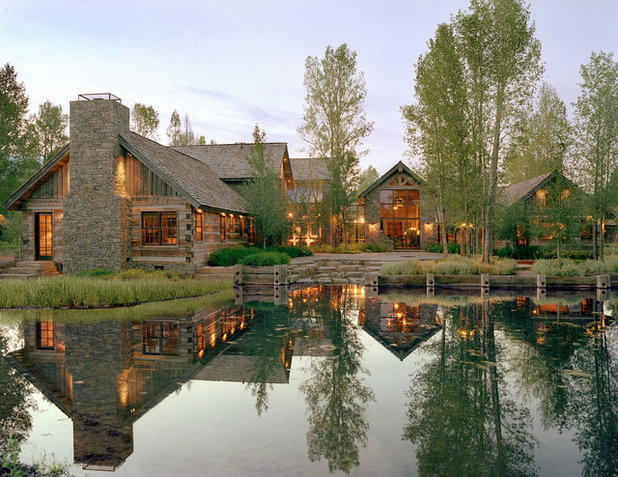
JLF & Associates, Inc.
Focus on scale and repetition. This grand home is elegantly seated in its garden. Using the same, simple plant palette with trees and grasses on different scales actually connects this home to the greater landscape.
A walk outdoors is the best classroom you can have if you want to learn about scale and repetition for your garden. Nature is big, bold and grand — don't be afraid to make the same statements in your garden.
Learn more about scale and repetition in the garden
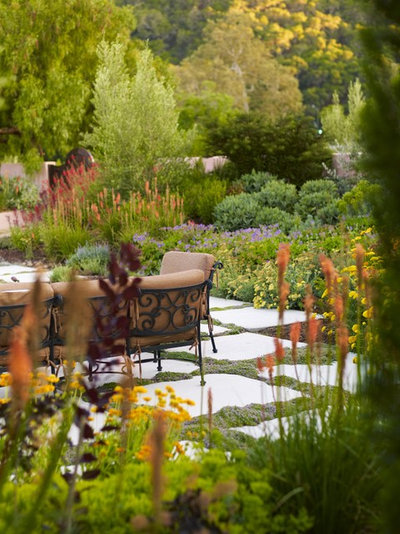
Jeffrey Gordon Smith Landscape Architecture
Create an experience in every outdoor space. Pool decks and patios without a garden just don't feel good to me — no matter what material is used. Plant these spaces to create an experience of place. Consider your site first, ask what the site wants and find plants that will work best for your garden.
This photo shows a fairly simple palette of robust plants: Red-Hot Poker (
Kniphofia sp), yarrow (
Achellea sp), and geranium all have great cultivars to select from. The thyme between the pavers makes the space elegant, when it could have looked stark.
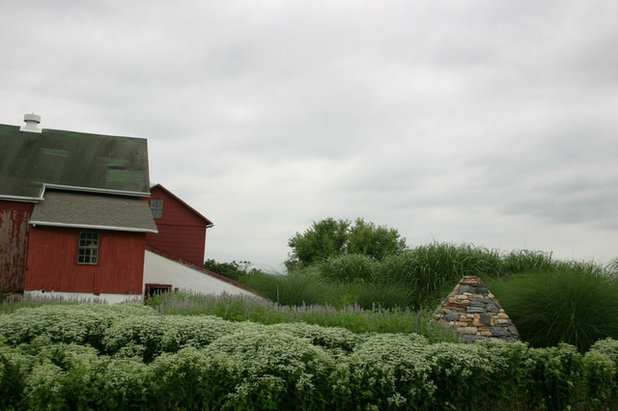 Be bold and simple.
Be bold and simple. Look for plants that are aggressive, but won't be invasive into surrounding landscapes. You can learn about exceptional plants by touring public gardens near you and seeing what grows well in your climate and growing conditions.
This gardens summer palette is dominated by
Miscanthus 'Giganteus,'
Miscanthus 'Gracillimus,'
Agastache 'Blue Fortune'
and Pycanthemum muticum. Although it would have been easy to add dozens more species to this space, the power of this composition is in its simplicity and effectiveness.
These plants outcompete weed seed blowing in from 30 feet away. Their aggressive nature allowed this garden to be planted at a fraction of the cost of conventional gardens and overall management needs are almost nonexistent. These are the right plants in the right place.





